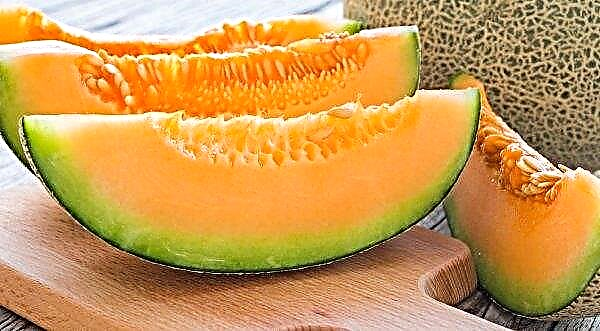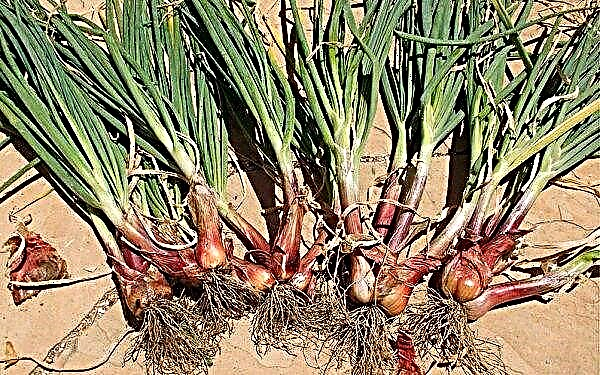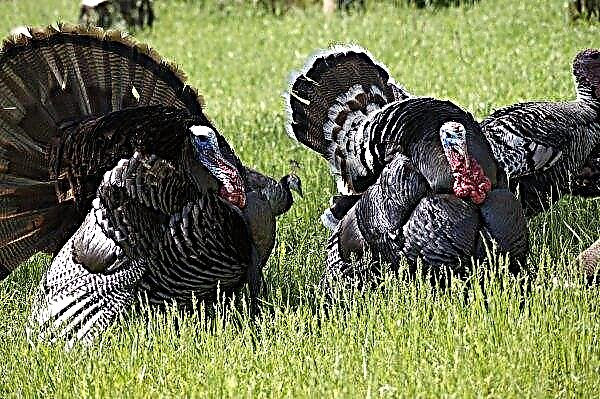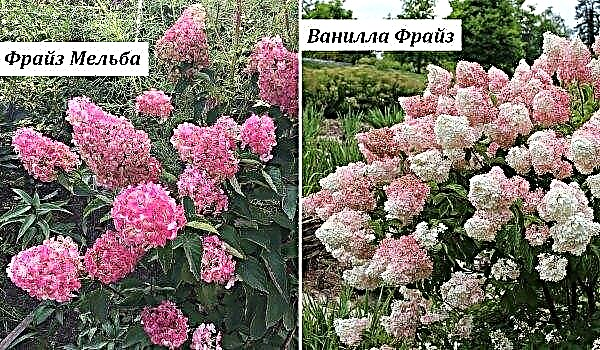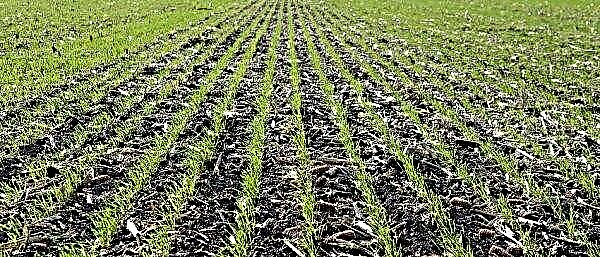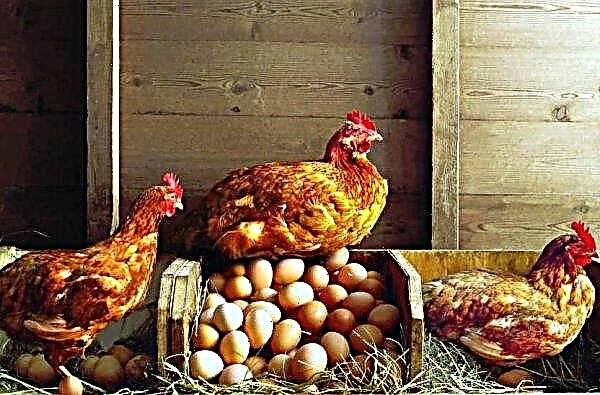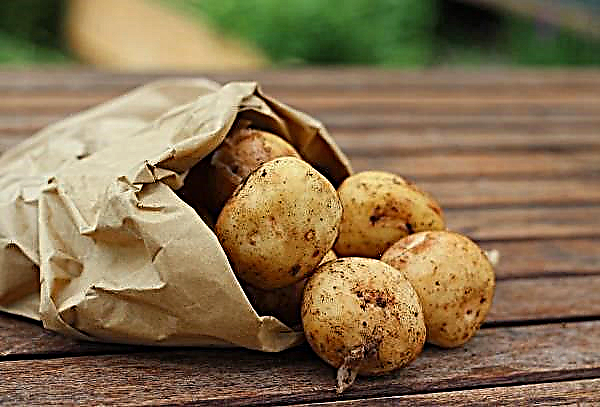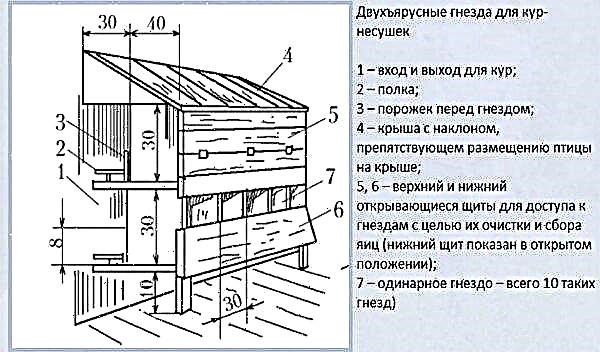Scientists have been studying the beneficial properties of bee pollen for many years. Today, this product is used both for medicinal purposes and to strengthen immunity. Pharmacological companies prepare preparations based on pollen, but many prefer to use it in its pure form. What properties this product possesses and what you should know about in order to get the maximum benefit from it, later in the article.
Did you know? To get 1 tablespoon of honey, coordinated work of 200 bees is required throughout the day.
Bee pollen and its varieties
Bee pollen or pollen is a plastic, rounded lump of plant pollen that attaches to the legs of bees during the collection of nectar. Hardworking insects saliva the hind limbs, which is why after several hours of flight from plant to plant, flower pollen is collected in the form of dense balls.
Bees carry them with them to the hive, where after they clean off lumps from their legs and feed them. From here came another name for this product - bee bread.
In addition to the nutritional function, pollen plays the role of a kind of prophylactic agent for various diseases of bees.
- After all, the substance contains a lot of useful substances:
- protein - 35% of the total mass, while in terms of the number of important amino acids, it overtakes milk and beef 5-6 times;
- healthy fats - up to 15%;
- vitamins: ascorbic acid, biotin, riboflavin, folic acid, etc .;
- minerals: zinc, chromium, silver, palladium, cobalt, etc .;
- biologically active substances: carotenodes, nucleic acids, phenols.
Studies have shown that, depending on the location of the pick, the color varies and the properties of the product itself differ:Important! Often bee pollen is also called bee pollen. However, this is not entirely correct, because bee bread is pollen already processed by bees. It contains more sugars and a reduced proportion of fats, although in utility it is not much inferior to pure mash.
- light green balls are collected from linden. Their use will prevent colds, and already ill patients will help lower the temperature;
- yellow willow stalk recognized as a natural antibiotic. It is recommended for infectious diseases, helps to overcome the negative microflora without side effects;
- bright orange dandelion products contribute to recovery in diseases of the gastrointestinal tract;
- light pink shade stalk is obtained from blooming clover. It is useful for people who have problems with the heart and blood vessels.

How to collect and dry pollen
To collect a valuable product, beekeepers have long come up with a special method.
- Special bags are attached to the notch in the hive, due to which the entrance to the bee house is significantly narrowed.
- Making their way into the "house", insects cling to the bag with their legs, leaving clumps of leg on it.
- After, the beekeepers pick up the filled bags and sort the balls according to color.

Natural drying
As practice shows, mash can not be dried at temperatures above 45 ° C. Therefore, simply decomposing it in the sun will not work.
If you need to dry a small amount of pollen, then experienced beekeepers recommend doing this in warm, shaded rooms with good ventilation. (for example, an attic), where sheets of paper are laid, gauze is placed on top of them (for protection against pests) and a valuable product is poured with a thin layer (up to 1.5 cm). 3-4 times a day it needs to be mixed, and after a few days it will dry to the desired state.
Whether the scrap is ready for further storage, a simple test will show: a lump thrown onto a wooden surface should make a ring. The dried product is sieved through a sieve to eliminate impurities, and then packaged in bags.
Did you know? A bee makes up to 10 flights per day, bringing about 200 mg of pollen.
Drying cabinet
For processing large volumes of kneading, drying cabinets based on infrared lamps or electric heating elements are used. Such devices provide proper temperature conditions and high-quality ventilation, so that drying is carried out 2-3 times faster than in natural conditions.
A drying cabinet can be purchased or made with your own hands, because it has a very simple design. Its basis consists of a box with a lid (it is better to take wooden products), in which ventilation holes are made.
If you plan to use infrared lamps, then they must be placed at a distance of 20 cm from the grid with small cells - it is on it that pollen will be dried.
When creating an oven based on electric heaters, there are some peculiarities:
- a wooden box must first be sheathed with metal;
- in the upper part of the device it is required to place a fan that provides air flow in the volume of 22 m³ / hour;
- heating elements are placed in the middle of the cabinet;
- ventilation holes are located around the perimeter from the bottom;
- the gratings on which pollen will be dried are placed over the entire height of the cabinet.
Important! A home-made device must be equipped with a thermostat, so that when the temperature reaches 40 ° C, the heating is turned off automatically.
Ways to store at home
Fresh bee products spoil quickly (molds and is exposed to bacteria). For its preservation, drying and preservation are used. How to dry the mash is already described above. Ready, its first thing to pack in sealed bagsotherwise, the oxidation of fatty acids and the breakdown of beneficial proteins will occur.
Pollen preservation has its own characteristics:
- if fresh bread is taken, it is necessary to mix it in a 1: 1 ratio with crystallized honey or powdered sugar;
- when canned products are already preserved, then the same preservative rate must be taken twice as much;
- the resulting mixture is densely packed in tanks, after which they are closed.
Terms and conditions of storage
The duration of further storage of pollen directly depends on the creation of suitable conditions.
Packed dried mash is placed in a dry place, where the temperature is kept at + 20 ° C. If the product is preserved, then you will need a cooler (up to + 14 ° C) storage, and placement in the refrigerator is also suitable.Dried pollen in sealed packaging can be stored for up to a year without loss of quality. But canned longer - up to 2 years. But at the same time, after 6 months it will lose its properties by 30%, and after a year - by 50%.
Bee pollen is a natural complex of vitamins and minerals that can replace a number of pharmaceuticals. The benefit from it is incomparable, and there are practically no contraindications (it should not be used only to people who are allergic to honey). However, to maintain its healing properties, it is important to provide the product with proper storage conditions.

